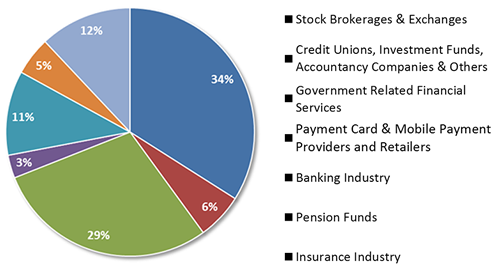Top-10 Cybersecurity Predictions of 2015
Healthcare at risk?
As noted by Websense, healthcare data is valuable. Not only are companies such as Google, Samsung & Apple tapping into the industry, but the sector itself is becoming more reliant on electronic records and data analysis. As such, data stealing campaigns targeting hospitals and health institutions are likely to increase in the coming year.New players on the global cyberthreat field
We have continual spats between the United States and China — each country accusing the other of state-sponsored cyberattacks — a flow of cybercrime reports from industry experts and a rising digital presence in countries like Russia, and so it is safe to assume we'll see more of the same in 2015.Cyber espionage can be lucrative where sensitive, corporate or government data is concerned, and when we live in a world where teenagers can break into these networks for the fun of it, the lure of valuable data will likely beckon new players to the field.New vulnerabilities
Heartbleed, OpenSSL flaws and the Shellshock bash bug are some of the main headliners this year in exploits and security flaws, and we are likely to see more revealed over the coming year. The reaso is that many systems used by governments and businesses are based on open-source code, which is cheaper to implement than starting from scratch. Should flaws exist, in conjunction with these valuable networks, exploits to take advantage of such weakness will eventually appear.Information, also known as a digital goldmine
Information is the new currency — or, at least, can be turned to profit by credit card thieves. ATMs compromised with gadgets that steal card data, cameras that capture your PIN — these are today's dangers, & can be far more damaging than a stolen handbag or wallet. Cards can be cloned or unauthorized purchases made through these methods, and data may also find its way on to the black market.Internet of Things exposed
The idea of the internet of things (IoT), networked and connected devices, is slowly emerging in the consumer market. Gadgets like smart coffee machines, cars and Google's smart Nest thermostat are only the tip of the iceberg, but unfortunately once you connect a device to the Internet, you make it vulnerable to attack. In 2015, as IoT expands, we are likely to see an increase in cyberattacks levied against these products.Enterprise encryption
Most businesses won't hit the profit margins to do more than other industry players when it comes to security. The general level of security in networking improves when risk management demands it, but in the following year, we are likely to see funds diverted to bolster policies regarding encryption.. Top-level players such as Google & Apple have already begun this trend - and others are likely to follow.Email threats increase in sophistication
Email-based phishing campaigns have evolved from long-lost uncles in far-away countries to users apparently winning the Spanish lottery or faked requests from PayPal to check transactions, and we're likely to see a continued evolution of these campaigns to become even more sophisticated and enticing.Insider threats
A network is only secure as its weakest link - and in the world of cybersecurity, this is most often the human element. Sometimes, networks are breached by human error, but insider threats remain - and will continue to be - a growing problem. Technology evolves, and mistakes are made - and money is often there for the taking to compromise a company's system from the inside.Mobile concerns
With the expansion of mobile device use, apps that gather data and increased connectivity, it is likely that mobile threats - such as malware and phishing campaigns - will be refined to seek more ways to steal credentials or authentication details. Mobile devices will likely become popular access points that increasingly seek to compromise cloud-based applications, especially in the corporate realm thanks to bring-your-own-device policies.Next generation datacenters
As corporate demand for data and information storage and analysis grows, so does the datacenter industry. It often makes sense for businesses to utilize these centers to safely store and manage their computer equipment, and over next year, we are likely to see the beginnings of change in data center design - building strong security within the original framework, rather than retrofitting.
Read the Full Article Here
==>>
http://www.zdnet.com/top-cybersecurity-predictions-of-2015-7000036102/#photo




Комментарии